Leaderboard
Popular Content
Showing content with the highest reputation on 02/04/21 in all areas
-
I got things connected up and all the bits glued on. I got the ESC in place, the Rx in, and the elevator and rudder servos in. D.D. Tail sorted. ESC. Rx5 points
-
I’m amazed and really pleased that so many are willing to try this inexpensive covering material. Spreading the word to keep costs down!4 points
-
Thanks David -it's been a long held dream to have a decent workshop, having spent a long time working away from home, coming home for the weekends and with the models usually occupying one room, but with not a lot of room to work. The outbuilding conversion took quite a lot of planning, but I've borrowed lots of ideas from magazine and other modeller's workshops and sheds. I wanted to have a couple of 360 degree access benches, as well as my trusty main bench which was made from a draughting machine. It was about 80% finished when the first lockdown started and the second fix electrics and finishing couldn't be completed for months. I decided that I needed a lot of storage for models and kits outside of the workshop, then had the idea of putting a mezzanine floor in the barn to house the kit mountain. The finishing touches were adding wall rack for holding my fleet of funfighter sized models ready to grab and go. I did put some pictures in my gallery in the old forum, but those photos are all mixed in now. Here's a piccy of the model storage racks -I've added another bay since then and plan to add a couple more in the near future.4 points
-
It's been a great week back in the saddle. 4 incident free sessions, 27 flights including 3 successful maidens - my Mpx Lentus and Dane-rc Wisel XL plus a Clubmate's Mpx EasyGlider 4. Let's hope it all continues in the same vein.3 points
-
I've looked at the source code of the MPM for the Hitec protocol, and it appears to be handling the tuning in a different way. I've asked on the Multiprotocol thread on RCGroups about this. Mike3 points
-
The easing of "Stay Home" and start of "Stay Local" was my first chance to get out flying since last September. I've flown a few times from the garden, but this was a first trip to the club field, which is only a couple of miles away -literally five minutes drive. Unfortunately there was nobody else there, which was a shame, as no opportunity for a socially-distanced blether. It was fantastic to get out and up in the fresh air though - so I'm a very happy bunny right now. ? It was very much a case of flying some old faithfuls as I knew the thumbs would be rusty, but I had hoped to remaiden my venerable Mini Astro Hog electric conversion - she last flew more than 15 years ago, with an OS. 10 FP on board. After a few bottle-building flights with my Easyglider and Tucano, the wind had slightly got up and the grass was just a little too long for my FW190 to ROG cleanly The wind was also now directly across the strip, so I wasn't going to try to get off in 10m. I think that I'll get a few more post lockdown sorties under my belt before committing to a maiden flight - i've got a load of models that I've fettled/assembled during the lockdown waiting for a maiden, I'm sure than many of you are in the same boat. I definitely recommend taking a well sorted, familiar model for those first post-lockdown flights.3 points
-
Other things did get in the way but progress was made. First the rear fuselage built in my usual "unusual" style, vertically! Its very empty inside. The biggest former has been removed so it can be joined to the centre section with an internal overlap. The centre section is built slightly differently using the wing as a support with some temporary jury struts. The planking goes on and the jury struts removed.. The end result is strong, rigid and light but will be extra ordinarily difficult to repair.? A short front section is also required but as the fuselage is completely hollow front to back it is safe to join then all together. The extreme front and rear fuselage sections will actually have stuff inside them so are bit more complex to make.3 points
-
One thing I would add here is that experience and skill don't always make for a good teacher. I was in a club where the 'expert' appointed himself as the club teacher, but was generally to be found impatiently taking the tx off the student every few minutes or showing off with 'demonstrations'. The essence of training is to teach people to fly just well enough to be safe and able to fly and land in one piece reasonably consistently. Most of the real learning comes after you take off the reins.2 points
-
Hopefully I`ll be back flying by then.2 points
-
I made mine from MDF, glued and screwed. Partition shelves one one side with one vertical for sheet on the other using post-it notes between the different thicknesses.2 points
-
The reporting form is just a web page so can already be accessed and used on a smart phone........ GG2 points
-
I think common sense has to be used here - and yes, I know that it isn't a defence in law. Let's say that in your scenario, the model crashes behind a hedge into what you knew to be an agricultural field which should be empty unless a tractor was working in it. You go to retrieve it and other than a few slightly alarmed pigeons, nobody is in sight and no damage has been caused to the field. You can fairly state that there was no endangerment to persons or property and you were able to monitor the flight to a split second before losing sight of the model. Alternatively, you arrive to find a concerned boyfriend comforting his swooning girlfriend amidst the wreckage of their picnic which has been deranged by your wayward Wot 4 - happily they were canoodling in the standing corn several feet from the impact while trespassing on the land. This is obviously reportable as would be the case if anyone were within a reasonable distance at the time of impact or the crash site was the playground of the local infant school. In essence, if there was a perceivable risk, go through the reporting process but if you honestly believe that nobody was put in any danger then it doesn't require any action. It's rather similar to the old conundrum of whether a falling tree in a deserted forest makes any noise... With an infinite variety of circumstances possible, I can't see how any hard and fast definitions could be possible and any legal judgement would hinge on whether you took reasonable actions in deciding whether to file a report - did you feel lucky there was nobody near or would it have come as a shock that somebody was?. If you carried the logic that something might have happened if circumstances had been different to extremes, surely every flight by a model or full sized aircraft could potentially endanger someone!2 points
-
FrSky protocols, when used with a FrSky Tx module and FrSky receiver don't need fine tuning. Any Multiprotocol module using a protocol with the CC2500 RF chip (that includes FrSky protocols) do need fine tuning. I have several MPM modules (6 I think!) and they are all different, varying between -40 and +40 when using FrSky protocols. Mike2 points
-
2 points
-
At the moment I store sheet balsa on the shelves under my butcher's block free standing building bench. When I get a round tuit I intend to make a pigeonhole style set of separators to let me stack the balsa more efficiently. Strip balsa, hardwood, dowels, cf rod and tube, plastic and ,metal tubes and ;piano wire is stored stood on end in a map rack. That is not ideal for balsa strip, because it bends, but like others in the thread I prefer to cut strip for a job, using a balsa stripper, so don;t carry a large stack of strip. I have a set of fish-boxes, about A3 in size that holds sorted scrap of balsa sheet, block, strip, liteply, ply, hardwoods, plastic sheet and depron. There's usually a big enough piece of those materials in the scrap boxes to do small repairs and other jobs.2 points
-
Sorry Steve thats not going to work. Leave the port side open as that is not your issue. You just need to blank off the empty space so the air cannot escape around the engine. There is clearly still confusion on this so i have made a quick video to try and explain it better. I can help with the temp sensor too...throw it away ? The temperature range of an engine is pretty broad, but the limit depends on a number of things like quality of the oil, how long does it operate at a given temperature, what is the load etc. I cant give you a number so just dont bother with it .2 points
-
Not a fan. a correctly set up trainer model should be more than stable enough and with the right rates should not be so vicious the student just flips it on its back. The other issue is that you make the student learn twice by using a stabiliser as they might do ok with it on, but then have to learn all over again with it off. Many of the students i taught who had come, self taught, using stab equipped models really struggled when it came to takeoff and landing on their new non equipped models as they had come to rely on the stab system to keep things under control. It also gave them a false sense of their ability and lead them to buy models that were too advanced too early leading to a number of crashes. No doubt some will disagree, but in my experience the best trainer is a classic 40-46 size model. It can be electrocuted these days if you want, my choice would be a 50 4 stroke using a 13x5 prop, but electric would be fine. Its the size and weight of the model that is important. Trying to learn with a foamy is hopeless as the models just dont stall and are useless if you ever want to fly anything else.2 points
-
Thank you for going to that trouble Danny, I’ll take a good look at it. I’ve found out today that the AOP6 is now in the Czech Republic! It was built in 1946 and originally served with the Royal Auxiliary Air Force, I think 664 or 644 Sqn, something like that. We were allowed to fly it in its original military markings.1 point
-
...and within moments a solution appears to have been found - gotta love the MPM project ?. (Ground) test away guys!1 point
-
Wing centre section coming together. Some cap strips on the spars to add and shape to the airfoil section and then ready to be sheeted. Flap and aileron servo positions shown on plan not being used as I prefer to have servos directly behind the surfaces. They can be fitted once the wing is inverted and prior to bottom sheeting. I haven’t used pneumatic gear before so need to investigate how and where to route the plumbing to the retracts, door operating actuators and the sequencer. I shall most likely use one of these and mount it in the centre of the wing so I only have one pneumatic connection to make when assembling the model.1 point
-
1 point
-
well there you go Phil, fear not i sent my model up and away and had no issues at all....it was a bit unnerving when i set things up,but after a bit research etc......and the first time out with it,i resigned myself to the fact that the set up was ok,2nd by the proving flight...maybe the latest firmware update for the module did it... ken anderson...ne..1...module dept.1 point
-
Blimey - look at all that space! You obviously aren't trying hard enough! ? I stack at the back of one of my wall benches - thinnest sheet at the bottom. Strip, I buy, as I've never got consistent cuts with a DIY stripper.1 point
-
The document laminate is great. As well as covering my planes, I am using them for covering my plans (hence using them without any other film on top them during the building process).. I also cover and my cork building mat.. It is really versatile..1 point
-
Yes Grumpy Gnome, spot on. I have spent some time over 2 days reading and digesting the BMFA writings regarding this subject. To be honest, I found it far more simple than others in various places were making it. Well done BMFA and Thank You for your time and your efforts.1 point
-
I would disagree with this. There are a whole range of skills in learning to fly a plane. To answer your point above "What is the primary goal of training on a particular day". Frankly neither of your answers is appropriate, both are far too broad. If you take an absolute beginner, simply enjoying their first flight is probably a reasonable objective. After that one has to consider which skill or skills do they need to accomplish next. For example, it may be getting used to orientation or it may be developing motor memory. Some people pick up both of these very quickly others take much longer. As part of this process at times the use of a stabiliser can be a great help. A good instructor to gradually build up their skills in a structured way. Throwing a student into the deep end trying to do everything at once is a good way to end up with a disillusioned student who goes off to find another hobby.1 point
-
The notion of visually impaired people flying R/C is intriguing. I suppose that it would depend of the level and type of vision loss, but I would think that FPV would be a very workable solution for someone who is limited to only being able to see well very close up and is therefore able to build models, but would find conventional line of sight flying impossible. Coupled with a stabilisation system or even an autopilot I'd think a whole world of possibilities could be opened up to those with even very limited vision to fly their models when coupled with sensible safety precautions.1 point
-
Just one final question Bas, are you an experienced r/c pilot? If not I'd recommend you start off with something more robust than the Auster.1 point
-
Thanks G.G. Some of the wheels I looked at were over £100. I know mine are cartoon style but I still have £93 in my pocket . ? D.D.1 point
-
Hi Colin, there is a lot of hacking around to do around the cockpit to make the DB one work, I also wanted to hack those chunky ply formers away, but it is the heart of the design. I think you may be better off drawing your own. The rear upper glazing wont work either. If like me you would have to use friese ailerons than they take a bit of work too. So my suggestion if you want it to be a good approximation, draw your own or take a look at the Jerry Bates 108" 1/4 scale plan? Cheers Danny1 point
-
This is the AOP6 I owned 1/5 of for a while. The flaps are the obvious difference to other versions. Perhaps I can do this one day, converting a DB kit would certainly be the easiest route. It look’s interesting.1 point
-
1 point
-
1 point
-
Back to the stabilizer, so its quite windy with frequent gusty spells over our bordering wood that induces random pitch and roll on almost every circuit, the wind is then turbulent across the field at ground level and spilling over the hedge line at the start of the runway. Not many people are flying as its hard work and your trainee turns up all eager to learn. Do you stand around talking and not bother flying, no you get the model out and do all the usual checks. Get out and do some flying and ok the wind is trying to push the model in all kinds of directions but the stab just keeps it on track...which ever way the pilot is sending it. Then once the trainee is really getting the hang we can have a go with the stab off, wow that's a handful and that's ok we can put the stab back on and get it back down in one piece. Its a tool that can be used to your benefit, if you want..or just miss another opportunity too fly.1 point
-
Hmmm... This is undoubtedly better, but there is still plenty of woolly language to my eyes. To clarify my understanding as per the updated BMFA guidance... Minor (and probably major?) injuries sustained in the pits due to ground handling issues (props injuring fingers, burns from a hot engine etc) are not reportable because they did not occur “...between the time the aircraft is about to take off until it comes to rest at the end of the flight with its propulsion system shut down”, correct? Have the CAA/AAIB given guidance on what they consider to be a “high probability that the occurrence could have led to someone being fatally or seriously injured”? For instance if a model loses control and crashes in a designated flight area where no uninvolved person or model flyer is or should be located, that is presumably not reportable? Yes, I get that not every use case can be listed and there will always be grey ones you could think up. We know the examples above will be hotly discussed at clubs around the country though, so would benefit from some additional detail/context. Another similar area would be the definition of BVLOS - if someone crashes into the hedge on the edge of our strip when landing or behind a fence due to a depth perception issue with no uninvolved people within the 15m Art 16 distance presumably that is not reportable?1 point
-
1 point
-
I was gonna leave it coz threads drifting off topic, but if you mask clumsy handling with expo, how do you develop a feel and better handling ? If you put big surface movements on, and dumb it down with expo, how do you develop knowledge on setting up ? Where's your skill base on setting up and more refined handling, which you'll need to fly more difficult models in the future ? It's side stepping an important part of the learning process for me.1 point
-
But restricting the servo movement to 30 degrees is wasting a huge amount of mechanical advantage. Much better to use the full movement and gear it down by using a hole in the servo arm closer to the centre. Yes, that's where it becomes non linear, but also the holding torque becomes greater. However, if you are saying that when used within 30 degrees of the centre (as you would normally expect of a beginner), then yes it's almost linear - hence expo not needed.1 point
-
Here is the video of the first flight, as above strong wind and cap mounted Runcam = not very good vid!1 point
-
1 point
-
The way I read it is that it requires us to report occurrences that occur over 400ft, not just going over 400ft. Therefore if you are over 400ft and do not have a safety related event, then you do not report because there has been no occurrence. This is why clarification in plain english with examples would be useful.1 point
-
I built 36”+ wide drawers under my work benches. This is the longer bench which isn’t tidy anymore! Scrap balsa, piano wire, aluminium sheet etc in one, laser cut parts for current build in another and balsa sheet and strip in the drawer below the other bench. It amazes me that you can buy a pair of very sturdy 450mm ball raced drawer runners from Screwfix for £6. So why do retracts cost so much?1 point
-
Strip should be rubber banded or taped together with masking tape to keep them straight1 point
-
I agree that you never truly finish learning to fly, and to be honest that is the best way to look at it. You can always do better and there is always something to learn. This again is why i am not a fan of making it artificially easy to learn to fly. Some aspects of the hobby are not easy, but you cant cheat. Each skill you learn opens new doors so if you skip things you might never get to do certain things, at least not to the best they could be done. Also if you cheat where is the sense of achievement? I had a student who cursed me for disabling his ailerons and making him fly left stick rudder only. But when he was able to nail a nice landing in a gusty cross wind he understood why i did it. he had seen many other 'better' pilots come a cropper but he was able to get it down. He was understandably pleased with himself and why not? Its also not important what level a trainee with eventually reach. I taught an older chap to fly and given his age and everything else safely flying something like a simple trailer, a junior 60, puper cub etc was all he was ever going to be able to do and even then there was going to be a rate of attrition. He really struggled to learn to fly, and in truth we never really finished before he was too unwell to fly any more, but he was one of the regulars, always there, always involved, always eager to learn. Crashes really angered him, mostly because he knew what he did wrong, but equally successes really meant something and a weekend with no bent undercarriages or broken props was a job really well done and something to be proud of. His first solo flight gained him a round of applause as everyone knew what those few wobbly circuits meant. If he had been babysat by electronics, all of that would have been gone. It might have been easier and with fewer broken models, but it would not have been the same. As for confidence. You cannot give someone confidence. They only gain confidence by overcoming difficulties and they cant do that if everything is easy.1 point
-
Had a super day yesterday, nice weather, first time flying since about Sept/October. Nice to see the lads again. A few flights with my TN Vulcan and a nice socially distanced picnic lunch.1 point
-
Several possibilities. Did you calibrate the Tx and the ESC settings to ensure the ESC is reaching full throttle? Could the connectors of the “low current” ESC be a bit high resistance? Check the soldering of the connectors and cables on the “low current” ESC. Dick1 point
-
Back up the patch this afternoon! Re-maidened my Wot 4 ARTF (as in just completed conversion from 4s electric to SC40) and it flies a complete treat, so much nicer (for me) than electric. The SC40 was brand new (except for previously running a tank through on the bench) but quickly got it tuned, and with an 11x6 prop seems to suit the model perfectly (for me). Club examiner was also flying (ducted-fan jets, jolly fast!) and gave me a few pointers about tidying things up for my eventual B-Cert.1 point
-
Thanks for the reply Colin, however I think I sorted it. I applied the minutest drop of c.a. after turning the gear round thru 180. It seemed to push on tighter this way . The prop now spins up to full revs. D.D.1 point
-
hope to be there John, save me a place. cheers1 point






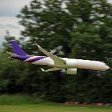
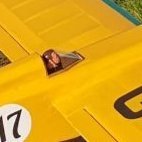




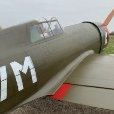



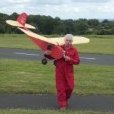
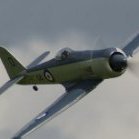

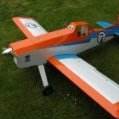
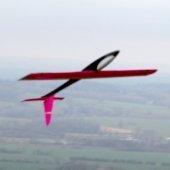
.thumb.jpg.32b4a5400612245f2f2fd5248213c28f.jpg)